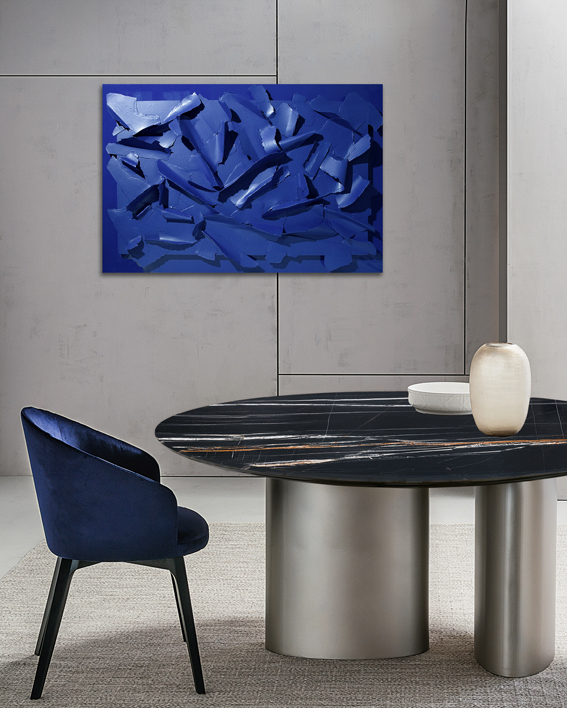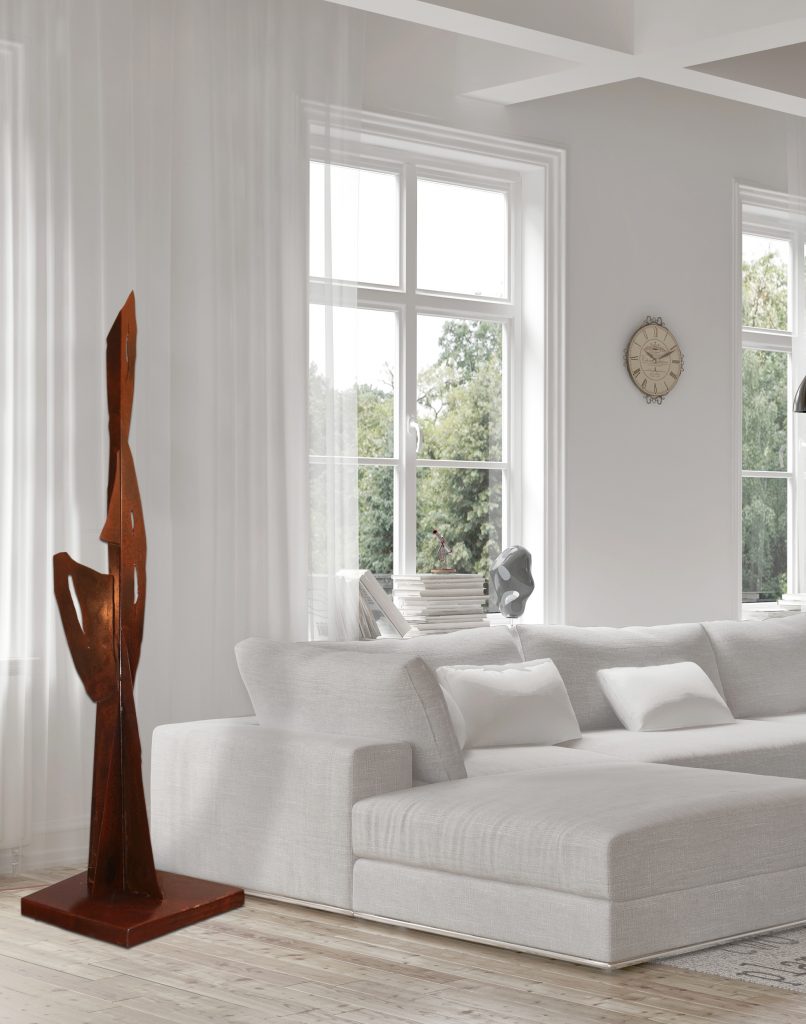December 2023
Group exhibition by invitation “ALBUM ITALIANO” – MONDI -DODICI – International Artistic Project by invitation- Circolo degli Esteri – Rome...

Eugenio Galli was born in 1951 in Seregno (MB) where he still works and since adolescence he has cultivated a passion for painting. Figuration was soon abandoned by the artist who, starting from the nineties, explored the concept of light, as the undisputed protagonist of his artistic experimentation. In the wake of this research were born the abstract cycles called “matter and spirit”, “universal perceptions” “chromatic iridescence” up to the recent production that flows into a particular philosophy in search of spiritual universality that goes under the name of “The transcendence of Eugenio Galli”. This new pictorial-sculptural line includes “white on white”, “explosions”, “levitations” and sculptures in various materials, especially in cor-ten.
Galli is an elegant and refined aesthete who through his abstract languages dialogues with the soul of the observer, managing to capture the many facets of the human soul.
Eugenio Galli has participated in numerous solo and group exhibitions in Italy and abroad, including Rome, Florence, Milan, Berlin, Lugano, Lyon, Budapest, Sharjah (United Arab Emirates) and Cairo.
His works are held in public and private collections, both national and international.



…this is Transcendence, or “going beyond”…it means going beyond the reality of the physical universe, thought and reason.
This pictorial and sculptural line is not inspired by tangible elements, images or elaborative contemplation. Instead, an individual as a spiritual being produces creative output, free of all “contamination”.
While he must use his body and handle different implements and materials in order to do this, he does so without thinking, but simply using the technique that he has acquired in a form of automatism. However, the consciousness of being means that nothing is done by chance.


Group exhibition by invitation “ALBUM ITALIANO” – MONDI -DODICI – International Artistic Project by invitation- Circolo degli Esteri – Rome...
“LIGHTS and INCASTRI” – Mazzoleni Foundation – Alzano Lombardo (BG)...
“ART THAT ENTERS YOUR SOUL” – Civic Shop Chiamamilano – Milan...
“RENART”– Artists for donation – Palazzo Trentini – Trento...
“WORKS” – Civic Gallery “Ezio Mariani” – Municipality of Seregno, Department of Educational and Cultural Policies Seregno (MB)...
“UNIVERSAL SIGNS” – Italian Cultural Institute – Swiss Embassy – Cairo – Egypt...
“THE RESERVE WING” – Inauguration of the positioning of a 400 cm sculpture – M.I.M.A.C. – Mariano International Museum of Contemporary Art – Alessano (LE)...
“WHISPERING SIGNALS” – Borgo Cardigliano – Specchia (LE)...
“ACCUMULATIONS”- Rudy Prampolini Juwelry design studio – Milan...
“WORKS” - Conference Hall “il Cittadino”- Province of Monza-Brianza, City of Monza – Monza...
personal “WORD and IMAGE” – Palazzo Chiabrera – City of Acqui Terme – Acqui Terme (AL)...
“ELEGIA DEL BIANCO” – Le segreti di Bocca – With the patronage and contribution of the Lombardy Region and the City of Seregno- Libreria Bocca – Milan...
“CHROMATIC IRIDESCENT” – Galleria Civica Ezio Mariani – Municipality of Seregno, Department of Educational and Cultural Policies – Seregno (MI)...
“UNIVERSAL PERCEPTIONS” – Palazzo Martinengo – Department of Culture, Municipality of Sondrio – Sondrio...
“OMEOART” by invitation and with the patronage of the Nobile Collegio Chimico Farmaceutico Universitas Aromatariorum Urbis Nobile Collegio Aromatariorum – Rome...
“OMEOART” and with the patronage of the Ministry of Cultural Heritage and Activities – Galleria Montenapoleone – Milan...
“THE MYSTERY OF THE WOMAN IN THE COCA-COLA BOTTLE”- Spazio Rosenthal Seregno (Mi)...
“MATERIA E SPIRIT” – Art Gallery “Le Lac”- Lugano – Switzerland...
“THE SPIRITUAL IN ART” – Art Gallery S.A.3 – Seregno (MI)...
“NOLENS VOLENS” – Art-East Galèria – Patronage of the Italian Cultural Institute for Hungary – Balatonfured – Budapest – Hungary...